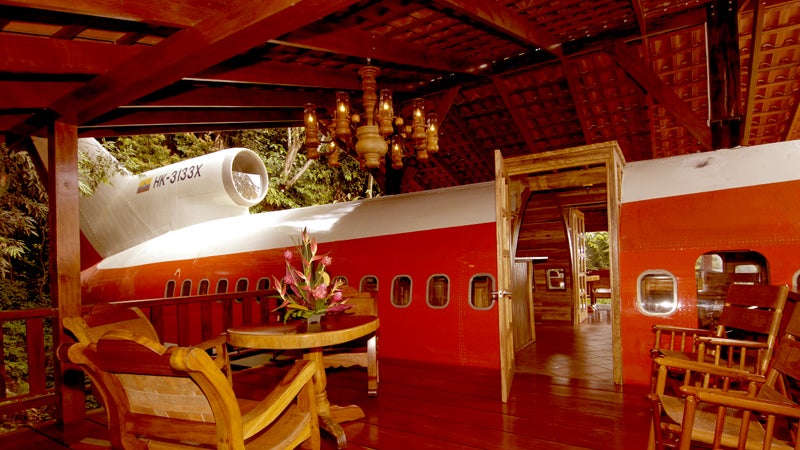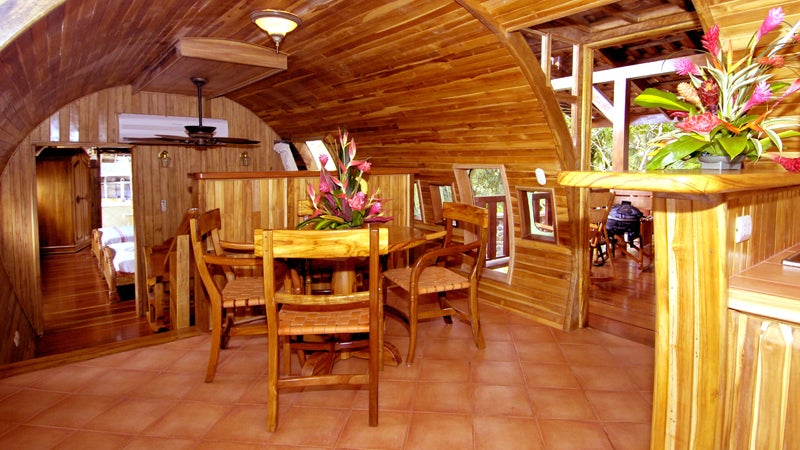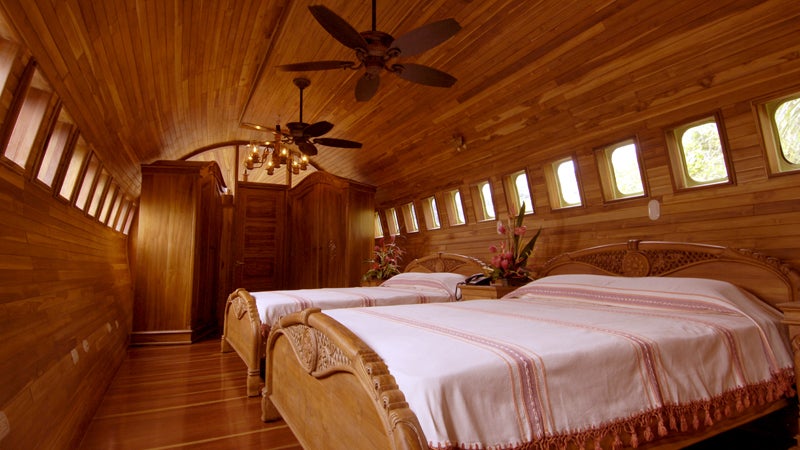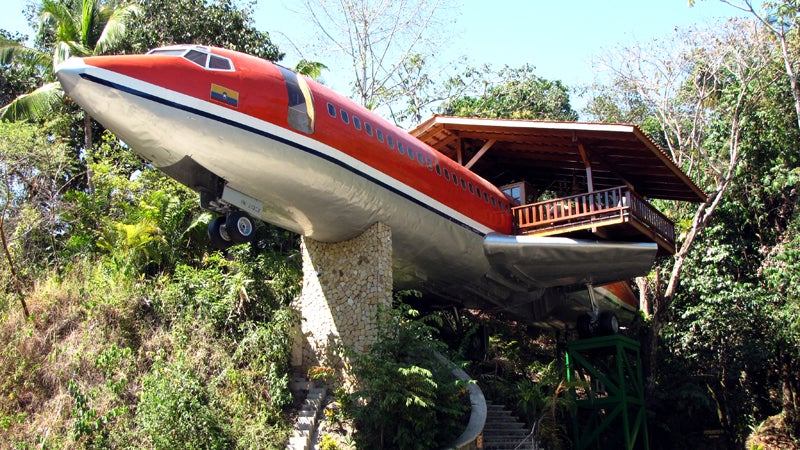Picture this. You’re in the sky with your newly betrothed, headed south on your way to a secluded tropical resort when the plane goes down on a deserted island. Shaking, disoriented, you and your loved one crawl from the wreckage and look with trepidation upon your new surroundings. Thick jungle canopy calls out in a hundred voices, each one an unseen threat. Undeterred, you vow to survive. Water is found, tools fashioned, food foraged, and finally, hunted. For shelter, you haul the wreckage of the plane, piece by piece, from the shore high into the jungle canopy where you construct a treehouse worthy of Robinson Crusoe.
Months later, the fear, blood, and toil behind you, you sit with your lover, your bodies tanned and hardened to perfection by jungle living, sipping coconuts in what was once the cockpit of your doomed chariot. Rescue has become a distant concern…
This is, of course, a totally insane fantasy, but there’s no reason you can’t experience at least the good parts of this old cliche, especially not with Hotel Costa Verde’s just a short plane ride away. Once part of Columbia’s Avianca fleet, the 1965 craft was converted into it’s dwelling form by Allan Templeton, who found the fuselage at Costa Rica’s San Jose Airport, where the long-decertified craft was being used as a shell for fire drills. After removing all the melted tires and separating it into five pieces (a process that involved the removal of over 40,000 rivets, the fuselage was moved to its new home at Hotel Costa Verde, outside Quepos, where it was reassembled 50 feet above the jungle floor.
“I developed the 727 fuselage home concept after hearing about an entrepreneur in Tennessee who was trying to sell ‘hurricane-proof homes’ by mounting 727 airframes on top of pedestals that allowed the airframes to rotate with the wind, though he never actually built a prototype,” says Templeton, who traveled to┬áCosta Rica as a Peace Corps volunteer in 1978 and never left.
Although the converted-airplane-turned-hotel has become something of a common oddity (if you’ll excuse the contradiction) in recent years, with the 727’s level of luxury and unreal surroundings. The suite, refurbished with hand-carved teak wood, now features two bedrooms, two bathrooms, a kitchenette and dining room, and, if for some reason you ever got sick of looking at the mind-blowing ocean view or the lush Manuel Antonio National Park, a flat-screen TV. Be warned though: Although the suite features a private entrance, you may still have more than a few visitors from the jungle canopy in the form of Costa Rica’s incredible array of primate and bird life.
? Well, much of the year, the price of the room hovers around $500 a night, but it can become much more favorable with the seasons. During Costa Rica’s green season (May to the end of August), the price drops to just $350 a night and $250 from September to November. Just don’t expect it to stay that low for for the holidays. During the Christmas/New Years rush, as well as Easter, it goes up to $750.
Unfortunately, smoking is forbidden in the plane’s cabin, but hey, just look at that leg room.





